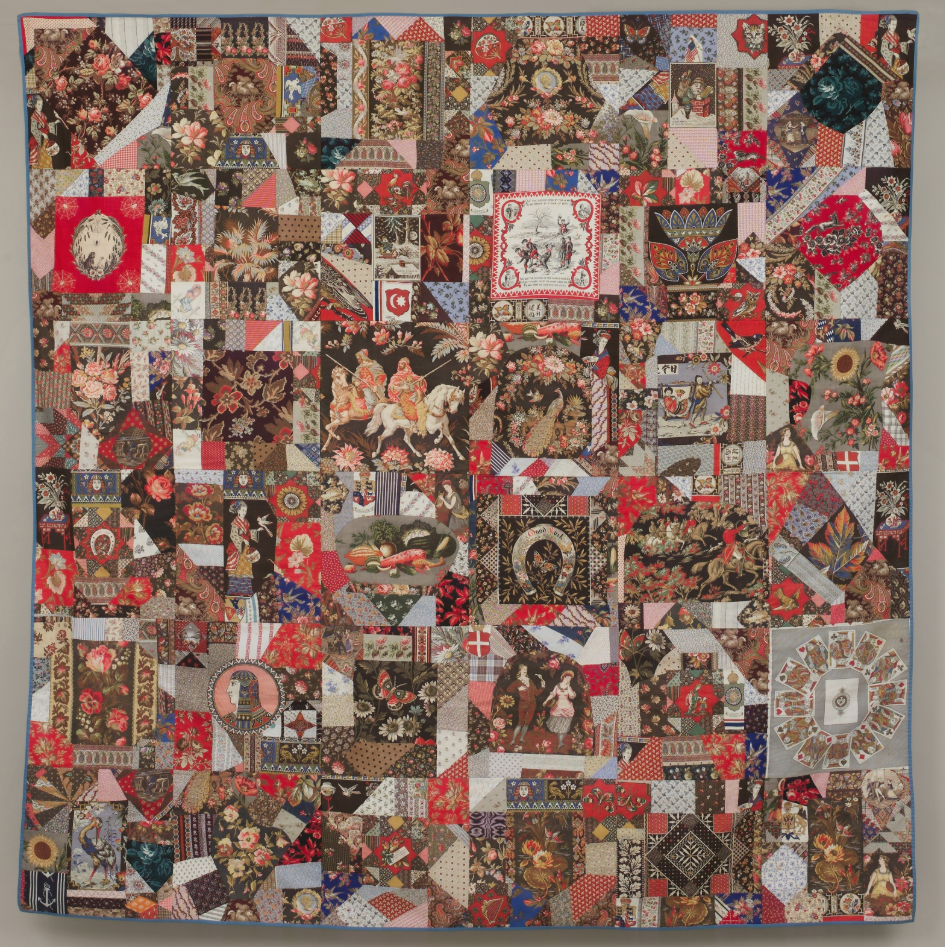Teach This Poem is a weekly series featuring a poem from our online poetry collection, accompanied by interdisciplinary resources and activities designed to help K-12 teachers quickly and easily bring poetry into the classroom.

American, ca. 1880-85. Medium: Cotton. Dimensions: 80 1/4 x 80 in. Credit Line: Purchase, David Scott Parker Gift, 2007. metmuseum.org.
The following activities and questions are designed to help your students use their noticing skills to move through the poem and develop their thinking about its meaning with confidence, using what they’ve noticed as evidence for their interpretations. Read more about the framework upon which these activities are based.
Warm-up (quick write): How do you think a piece of fabric might change as it gets older? Write brief descriptions of how a fabric might look when it is new and after many years have passed.
Before Reading the Poem (small-group discussion): Look closely at the image of the “crazy quilt” from the Metropolitan Museum of Art. What is the quilt made of? What images do you see inside the overall quilt? Are they in any particular design? In a small group, discuss how this quilt might have been made and what the function of this quilt might have been. What evidence from the quilt, itself, might you have for your answers?
Reading the Poem (individual reading): Read the poem by Nikki Giovanni silently, then write down the words and phrases that jump out at you.
Listening to the Poem (enlist two volunteers to read the poem aloud): Listen as the poem is read aloud twice and write down any additional words and phrases that jump out at you.
Small-group Discussion: Who (or what) do you think is speaking in this poem? What age do you think this person (or object) might be? What evidence for your answers can you find in the words or phrases that jumped out at you?
Whole-class Discussion: How is personification used in this poem? (Teachers, if you have not already introduced the concept of personification, please do so at the beginning of this activity.)What do you think the object or person speaking in the poem wishes? Why? This poem is dedicated to someone named Sally Sellers. From your reading of the poem, who do you think she might be?
Extension for Grades 7-8: Think of an object that you might use to represent yourself or someone you know well. Write down a carefully detailed description of that object and a carefully detailed description of the person. Using the details in both descriptions, write a personification poem about this object.
Extension for Grades 9-12: Follow the directions for the extension for grades 7-8. In addition, work with your teacher to create a “café” in which you read these poems to each other and other students in your grade. Collect these poems into a book with illustrations that you can publish for other members of your school or community.
More Context for Teachers
In her essay “Restoration in the Attention Economy: On Reading C. D. Wright’s ShallCross,’” Jenny Xie considers the relationship between poetry and attention: “One of the enduring pleasures of poetry lies in how poems ask us to tune in to a different frequency, a kind of deep listening and looking that can still the mind and enlarge the dimensions of the self.”
